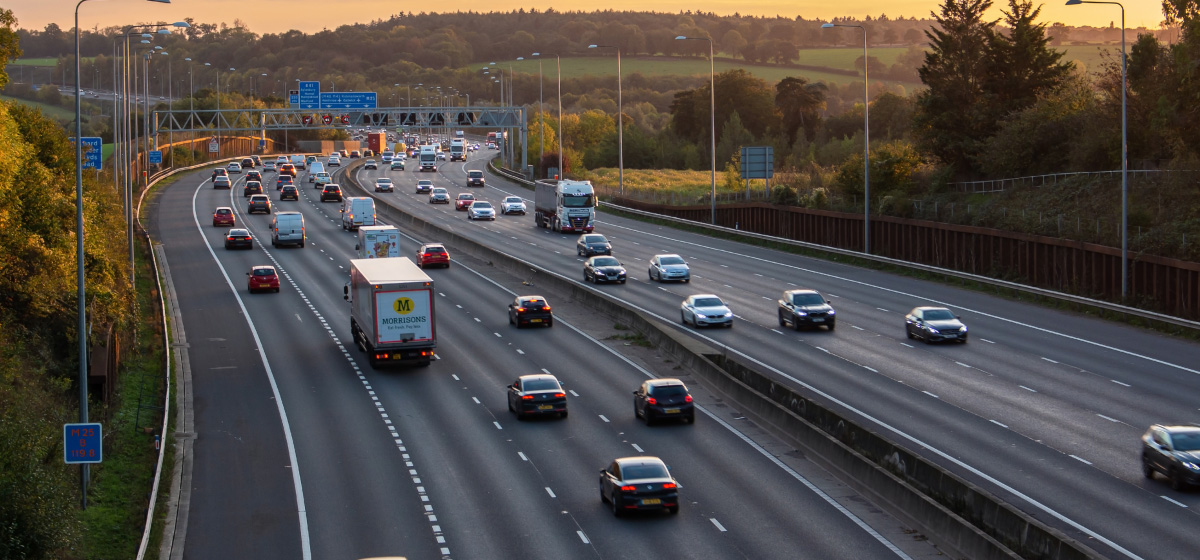Are you feeling nervous for your first time joining the motorway? Merging onto the motorway is a common fear among new drivers. We’re here to make sure you’re clued up on the facts. We’ve put together some dos and don’ts about joining the motorway to make your ‘first time’ a bit easier.
As you normally join the motorway from a left hand slip road or from another motorway, you need to:
- Keep an eye on the traffic in the left-hand lane of the motorway and give them priority.
- Get up to a speed that means you can integrate safely (usually around 50/60mph).
- Make sure you don’t cross any solid white lines or go into the hard shoulder.
- Not panic if nobody will let you out and adjust your speed accordingly.
- Stay on the slip road if it becomes its own lane and get to the right speed to match the other cars before deciding if you want to overtake.
What speed should I get up to for joining the motorway?
Do:
- Keep an eye on the traffic in the left lane of the motorway, as well as the speed limit.
- Get up to a speed that means that you’ll integrate well into the rest of the traffic. This is often around 50-60 mph, but can be up to 70 mph (national speed limit), or slower if there is traffic or nearby roadworks.
- Make sure you indicate to show that you plan to to join the motorway.
- Leave enough room between you and the cars in front/behind. The phrase ‘only a fool breaks the 2 second rule’ takes about 2 seconds to say, if you pass the same fixed point before you finish saying it, you need to leave more room.
Don’t:
- Go too fast or too slow. The speed of traffic on the motorway can vary. For example, during peak driving times or in adverse weather conditions, the traffic may be moving more slowly. It is important that your speed matches the traffic in the first lane. Stay observant and just go with the flow!
What do I if there are no gaps and I can’t join the motorway?
So you’re up to speed and ready to merge but no one is letting you out! What do you do?
Do:
- Remember that cars already on the motorway have right of way. It’s common courtesy for them to head over to the middle lane to let you out, or leave a large enough gap, but sometimes it’s just not possible. If this happens to you, don’t panic. Adjust your speed and keep an eye on the traffic from the moment it is visible. This way, you can plan the best time to merge.
Don’t:
- Force yourself into the traffic flow. You need to time your merge so you’re not too close to the vehicle in front or behind. Try to avoid coming to a stop at the end of the slip road unless the traffic on the motorway is moving extremely slowly.
What if I run out of slip road?
Do:
- Avoid this completely! If you correctly observe the traffic and adjust your speed accordingly, identifying a gap in the traffic where you will merge well in advance, you should not run out of slip road.
Don’t:
- Use the hard shoulder. The hard shoulder is only to be used in emergencies or if there are signs saying to use it as a lane (e.g. on a smart motorway). The Highway Code’s section on joining the motorway clearly indicates that you should not use the hard shoulder if you run out of slip road. Using the hard shoulder in a non-emergency is dangerous as you could collide with a stationary, broken-down vehicle.
What should I do if the slip road becomes its own lane?
Make sure you familiarise yourself with these signs so you know which lanes are merging into which, and if your slip road is turning into an additional lane, eliminating the need to merge!



- The first road sign indicates additional traffic joining from the left ahead. The right lane of the slip road becomes a lane itself, the left lane of the slip road merges. Traffic in right hand lane of slip road joining the main carriageway has priority over left hand lane.
- On the second sign, you can see the left lane of slip road becomes a lane itself, and the right lane merges. Traffic on the main carriageway coming from right has priority over joining traffic.
- Sign number three warns of additional traffic joining from the left ahead. The left lane of the slip road becomes a lane itself, and the right lane merges. Traffic on main carriageway has priority over joining traffic from the right-hand lane of slip road.
Ready to merge? If your instructor thinks you’re ready, you might find yourself on a motorway lesson soon. Check out our guide to motorway driving so you’re sure to nail it!
Remember, you can only go on the motorway with your instructor. If you’d like some extra non-motorway practice while learning to drive, you can get flexible, short-term learner driver insurance from 2 hours to 180 days and practice in a friend or family member’s car.
